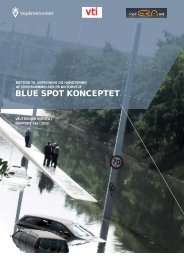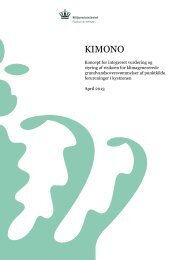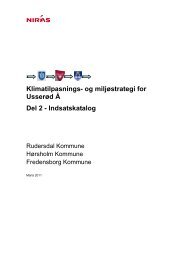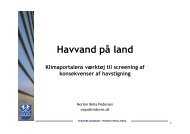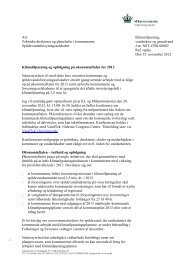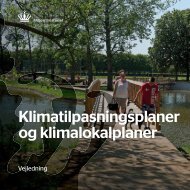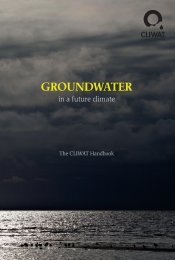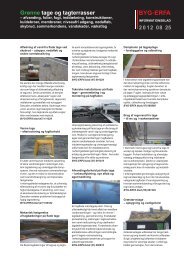Mapping climate change - barriers and opportunities for action
Mapping climate change - barriers and opportunities for action
Mapping climate change - barriers and opportunities for action
You also want an ePaper? Increase the reach of your titles
YUMPU automatically turns print PDFs into web optimized ePapers that Google loves.
Forestry<br />
Fisheries<br />
Energy<br />
Tourism<br />
The industrial sectors, apart from tourism, are characterised by production directly dependent on the<br />
<strong>climate</strong> <strong>and</strong> there<strong>for</strong>e extremely vulnerable to <strong>climate</strong> <strong>change</strong>. Higher temperatures will generally<br />
provide <strong>for</strong> better growing conditions, which these sectors may exploit in their production, whereas<br />
more extreme events such as storms <strong>and</strong> heavy precipitation may harm production. Increased<br />
temperatures in Denmark in combination with more intense heatwaves in southern Europe will open<br />
up <strong>for</strong> tourism <strong>opportunities</strong> in Denmark.<br />
Biological areas<br />
Nature<br />
Human health<br />
In the biological areas, both humans <strong>and</strong> nature will respond <strong>and</strong> attempt to adapt to the <strong>change</strong>d<br />
<strong>climate</strong>. There will be both negative <strong>and</strong> positive impacts. For example, higher temperatures will<br />
provide <strong>for</strong> improved growing conditions <strong>for</strong> many species, however they may also lead to the<br />
spread of new types of disease.<br />
Cross-sectoral areas<br />
Emergency preparedness<br />
Insurance<br />
Spatial planning<br />
There will be direct physical <strong>climate</strong> <strong>change</strong> impacts in the cross-sectoral areas in the same way as<br />
in the other areas identified. The cross-sectoral areas, however, are characterised by providing<br />
services to the other areas where they are especially vulnerable to <strong>change</strong>s in <strong>climate</strong>.<br />
Spatial planning is about l<strong>and</strong> use, which is extremely reliant on physical <strong>and</strong> climatic conditions,<br />
<strong>and</strong>, as such, spatial planning is vital in cross-sectoral preventive ef<strong>for</strong>ts within <strong>climate</strong> <strong>change</strong><br />
adaptation.<br />
Emergency preparedness is about reducing the extent of the damage from extreme weather events,<br />
while the insurance industry provides compensation to those who have suffered damage. Both of<br />
these cross-sectoral areas are vital in mitigating the negative impacts of extreme weather events in<br />
the other sectors <strong>and</strong> industries.<br />
Below is an outline by area of the positive as well as the negative impacts of <strong>climate</strong> <strong>change</strong>, <strong>and</strong><br />
the <strong>barriers</strong> <strong>and</strong> <strong>opportunities</strong> in <strong>climate</strong> <strong>change</strong> adaptation ef<strong>for</strong>ts.<br />
23



